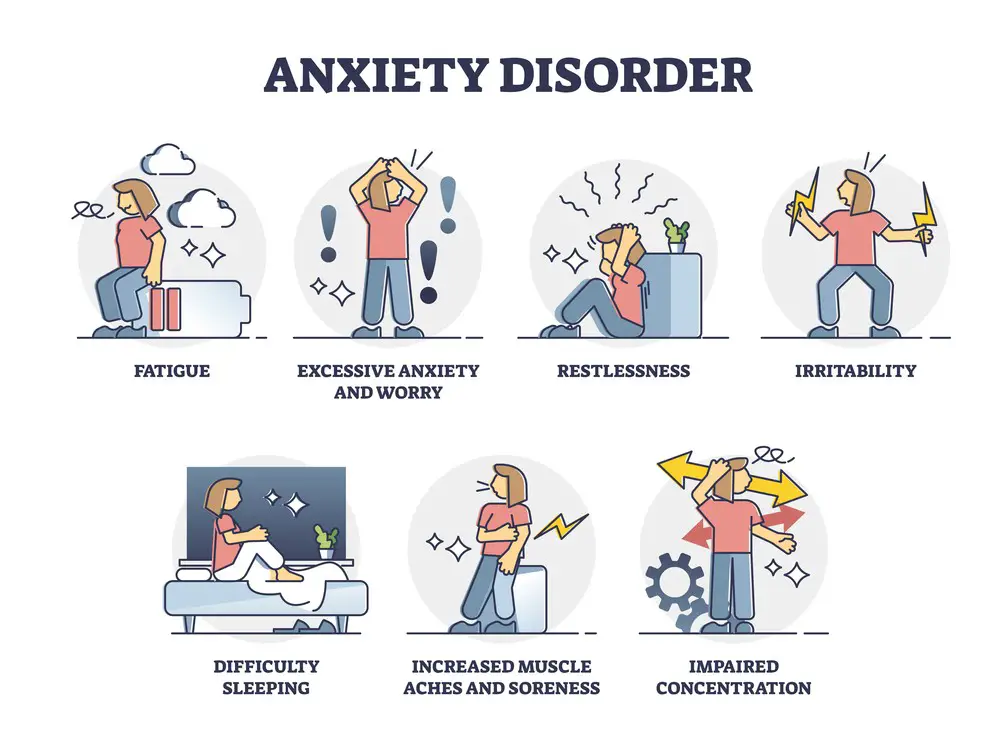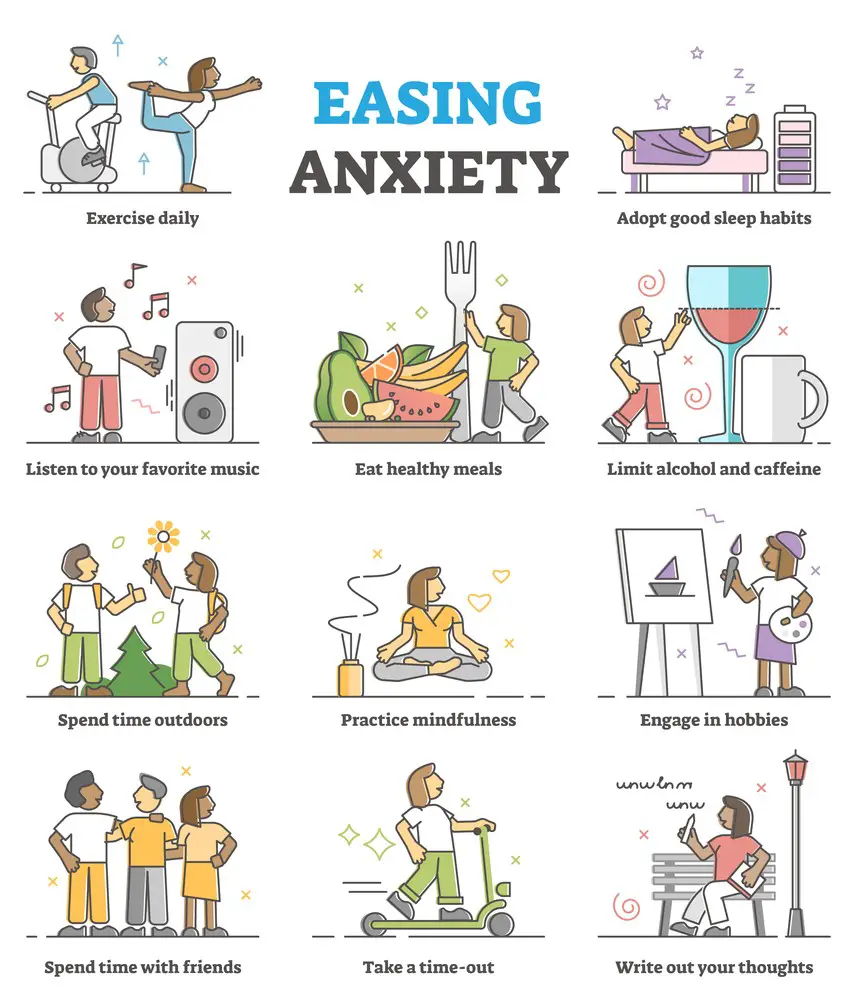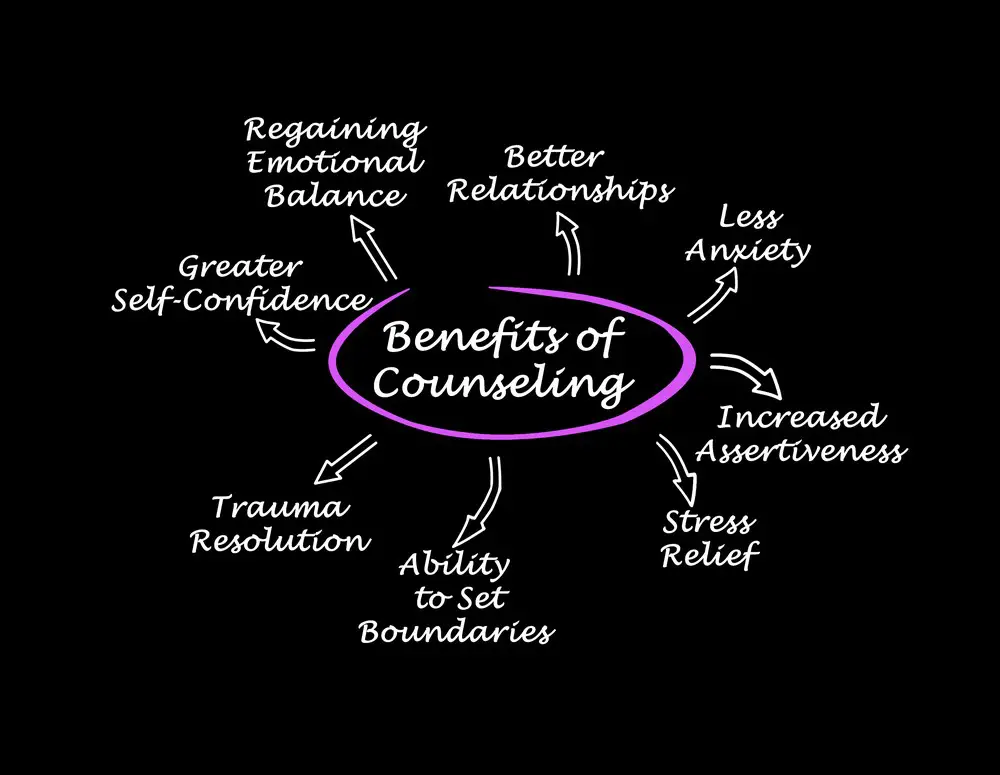As a BetterHelp affiliate, we receive compensation from BetterHelp if you purchase products or services through the links provided
Anxiety can manifest in various physical symptoms, including shortness of breath, which can be uncomfortable and alarming. Understanding the link between anxiety and breathing allows for the development of strategies to mitigate these symptoms and enhance overall mental health.
Recognizing the need to seek assistance from a mental health professional when enduring continuous anxiety that impacts daily life or presents other physical symptoms like chest pain or rapid breathing is vital. In a medical emergency, such as symptoms resembling a heart attack or severe allergy, seek medical attention immediately. It’s essential to consider the possibility of panic disorder as a cause for these symptoms and consult a mental health professional for proper diagnosis and treatment.
Understanding Anxiety-Related Shortness of Breath
Anxiety can lead to physical manifestations like shortness of breath, as it can affect the parasympathetic nervous system, which regulates breathing. Shortness of breath is a common symptom associated with various anxiety disorders, including generalized anxiety disorder.
Anxiety and Breathing: What’s the Connection?
Anxiety can profoundly affect the respiratory system, leading to shortness of breath. When anxiety is present, the body diverts oxygen to the muscles, which can result in less oxygen available for breathing. This can cause a cycle: the shortness of breath leads to increased anxiety, thus exacerbating breathing difficulties.
Diaphragmatic breathing and grounding techniques can disrupt this cycle, reducing anxiety and enhancing breathing. Addressing the root causes of anxiety and developing coping strategies is paramount to alleviating physical and psychological symptoms.
Symptoms of Shortness of Breath in Anxiety
Shortness of breath caused by anxiety usually presents as difficulty breathing, a sensation of tightness in the chest, or shallow breathing. These symptoms often occur during stressful situations, anxiety, or panic attacks.
Be aware that various health conditions, not just anxiety, can cause shortness of breath. If you’re unsure whether your shortness of breath is anxiety-related or due to another medical condition, consult your doctor for further advice.
Causes and Triggers
 Various factors, such as stress, environmental influences, and past traumas, can contribute to anxiety and shortness of breath. Comprehending these triggers aids in improved anxiety management and prevention of shortness of breath onset.
Various factors, such as stress, environmental influences, and past traumas, can contribute to anxiety and shortness of breath. Comprehending these triggers aids in improved anxiety management and prevention of shortness of breath onset.
Understanding Anxiety Triggers
Stress can activate the body’s fight-or-flight response, resulting in the release of stress hormones and causing physical symptoms such as:
- Shortness of breath
- Increased heart rate
- Sweating
- Shaking
These symptoms can lead to anxiety. Environmental triggers, such as changes in temperature, air quality, and allergens, can also contribute to anxiety-related shortness of breath.
Past trauma can play a significant role in developing anxiety and its physical symptoms, including shortness of breath. Hyper-vigilance and over-sensitivity to potential threats may lead to other anxiety symptoms, exacerbating anxiety.
Health Conditions and Shortness of Breath
Certain medical conditions, such as asthma, COPD, and heart disease, can exhibit similar symptoms to anxiety, including shortness of breath. Allergies to dust, pollen, and pet dander can also potentially lead to shortness of breath.
Some medications, such as beta-blockers and ACE inhibitors, cause shortness of breath as a side effect. If you suspect your shortness of breath is due to a medical condition or medication, consult your doctor for further advice and appropriate treatment.
Coping Strategies and Treatment
 Managing anxiety-related shortness of breath can involve various techniques, such as medication, breathing exercises, and mindfulness practices. These strategies can help alleviate anxiety symptoms and enhance overall quality of life.
Managing anxiety-related shortness of breath can involve various techniques, such as medication, breathing exercises, and mindfulness practices. These strategies can help alleviate anxiety symptoms and enhance overall quality of life.
Managing Anxiety for Better Breathing
Deep breathing exercises and cognitive-behavioral therapy (CBT) can effectively manage anxiety for improved breathing in individuals with chronic obstructive pulmonary disease.
CBT is an evidence-based approach that focuses on teaching individuals how to:
- Manage their thoughts, feelings, and behaviors that may be contributing to their anxiety
- Provide strategies for effectively coping with stressful situations
- Learn how to de-escalate them.
Incorporating the following practices can help reduce stress and improve breathing:
- Long deep breaths
- Yoga
- A stroll
- Consistent exercise
- Box breathing
Establishing contact with friends and family to discuss your feelings can often result in positive conversations and support, providing an opportunity for mutual understanding and solidarity.

Seeking Professional Help
Consulting a mental health professional is crucial if you are experiencing recurrent anxiety attacks or anxiety that disrupts your daily life. A qualified health professional can conduct a thorough evaluation, provide a diagnosis, and discuss treatment options, such as psychotherapy and medication.
Anxiety disorders are typically treated with a combination of psychotherapy, such as CBT or talk therapy, and medication, like selective serotonin reuptake inhibitors (SSRIs) or benzodiazepines. Seeking professional help enables better management of anxiety and its physical symptoms, thus improving overall well-being.
 Navigating the Breath of Anxiety: Seeking Help, Setting Goals, and Monitoring Progress
Navigating the Breath of Anxiety: Seeking Help, Setting Goals, and Monitoring Progress
As we unravel, the intertwine of anxiety and breath, recognizing when to step into a professional’s haven, setting sails towards mental wellness goals, and keeping a vigilant eye on the progress made become the trinity of managing this liaison. Here’s a closer look at each facet:
Signs You Need Professional Mental Health Assistance:
The undercurrent of anxiety can sometimes steer us into turbulent waters. Here are the buoys that signal the need to seek a mental health professional’s guidance:
- Continual Anxiety: When waves of anxiety crash in, disrupting the ebb and flow of daily life.
- Physical Alarms: Manifestations like rapid breathing, chest pain or palpitations beckon professional insight.
- Stormy Thoughts: Overwhelming fears or thoughts, wildly if they veer towards harm or extreme negativity.
- Avoidance of Anchors: Avoiding places or situations for fear of triggering anxiety.
Setting Sails Towards Mental Wellness Goals:
Calm seas never made a skilled sailor. Setting precise goals is your compass in navigating through the storm of anxiety:
- Identify Triggers: Understand what rocks your boat and how to avoid or cope with these triggers.
- Master Relaxation Techniques: Harness the calm of deep breathing, meditation, or yoga to steady your waters.
- Cognitive Behavioral Therapy (CBT): Consider using CBT to reshape stormy thoughts into serene clouds.
- Medication Management: If prescribed, adhere to medication guidelines to keep the sea monsters at bay.
Monitoring Your Voyage:
Steadily monitoring your journey is like having a reliable compass aboard. It helps in staying the course towards calmer waters:
- Regular Therapy Check-ins: Ensure you’re on the right bearing by having regular dialogues with your therapist.
- Journaling the Journey: Document your feelings, challenges faced, and victories, however small, to reflect on progress.
- Adjust Sails When Necessary: Re-evaluate and adjust your goals to the changing winds, ensuring they align with your wellness horizon.
Treading through the waters of anxiety, especially when it steals the breath from our sails, can be daunting. Yet, with the right compass of professional help, a sturdy vessel of personal goals, and a vigilant eye on the horizons of progress, navigating towards the serene shores of mental wellness becomes a voyage of hope and healing. Additionally, persistent shortness of breath may be indicative of underlying heart issues; for more information, refer to resources on heart failure warning signs like shortness of breath heart failure.
Conclusion
Anxiety-related shortness of breath is a common yet benign symptom that can be managed through medication, breathing exercises, and mindfulness practices. Addressing the root causes of anxiety, practicing stress reduction techniques, and seeking professional help when necessary can alleviate physical and psychological symptoms, enhancing overall quality of life.
Remember, recognizing the connection between anxiety and shortness of breath is the first step toward better mental health. Proper understanding and management enable easier breathing and a more fulfilling life.
Frequently Asked Questions (FAQs)
 Can anxiety cause shortness of breath?
Can anxiety cause shortness of breath?
Yes, anxiety can cause shortness of breath. When we’re anxious, our body’s fight-or-flight response kicks in, and one of the physical manifestations can be rapid, shallow breathing. This can make you feel like you’re not getting enough air, resulting in that unsettling sensation of shortness of breath. It’s a common symptom of anxiety, and understanding the connection can be the first step in managing it effectively.
What are the most common symptoms of anxiety-induced shortness of breath?
When anxiety takes its grip, shortness of breath can be unsettling. Often, people experience a racing heart, shallow breathing, and a feeling of not getting enough air. This can lead to dizziness, chest tightness, and a sense of impending doom, making it crucial to recognize these symptoms and implement calming techniques to regain control.
How can I differentiate between anxiety-related breathlessness and a medical issue?
It can be challenging to distinguish between anxiety-related breathlessness and a medical issue because they share similar symptoms. One key factor to consider is the context – anxiety often surfaces during stress or panic, while medical issues can be persistent. It’s crucial to consult a healthcare professional if you’re uncertain, as they can provide a thorough evaluation and help determine the cause of your breathlessness.
- Left Arm Pain and Anxiety: Understanding the Relationship - November 23, 2023
- Anxiety Paralysis: Coping with Overwhelming Stress - November 23, 2023
- Anxious vs. Nervous: Differentiating Emotions and Responses - November 15, 2023
This site contains affiliate links to products. We will receive a commission for purchases made through these links.



 Navigating the Breath of Anxiety: Seeking Help, Setting Goals, and Monitoring Progress
Navigating the Breath of Anxiety: Seeking Help, Setting Goals, and Monitoring Progress Can anxiety cause shortness of breath?
Can anxiety cause shortness of breath?
